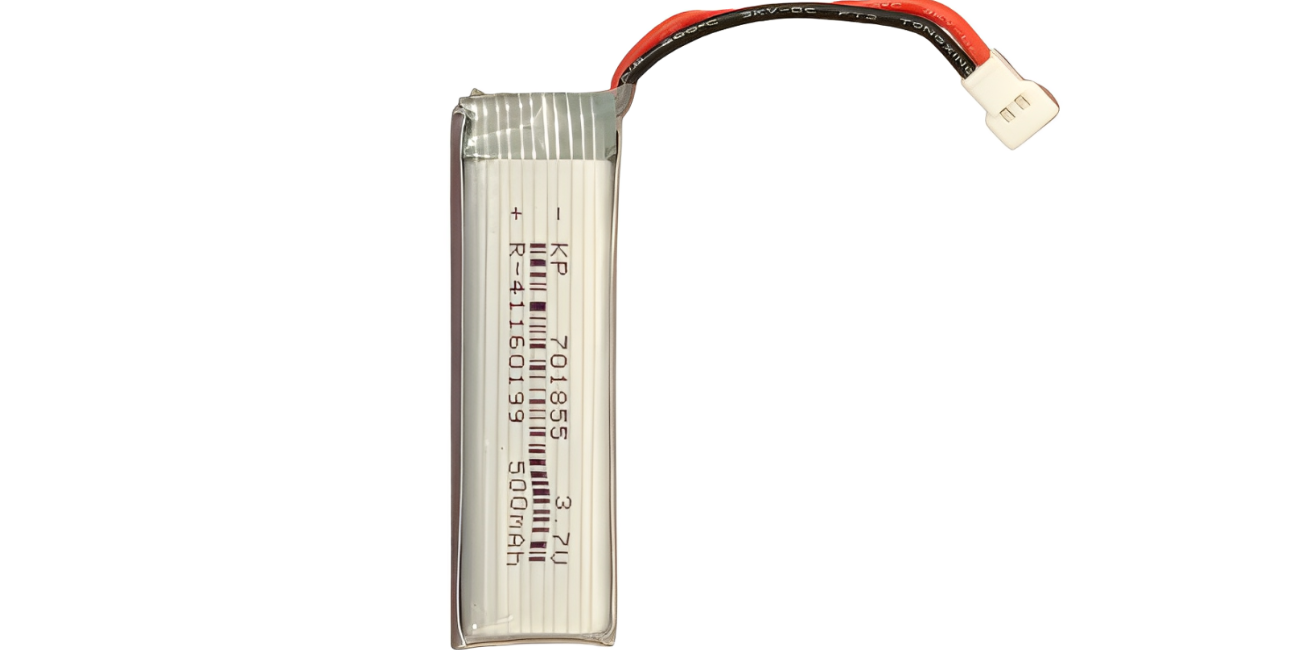Powering Your Projects: A Deep Dive into the 3.7V 500mAh LiPo Rechargeable Battery
In today's world of portable electronics and DIY projects, reliable power sources are crucial. One battery chemistry that has gained immense popularity is Lithium Polymer (LiPo). Known for their high energy density and lightweight design, LiPo batteries are a go-to choice for everything from drones and RC cars to wearable devices and IoT applications. This blog post focuses on the versatile and widely used 3.7V 500mAh LiPo rechargeable battery, exploring its features, benefits, applications, and essential safety precautions.
Understanding the Specifications:
Before diving into the applications, let's break down the specifications of a 3.7V 500mAh LiPo battery:
- 3.7V (Nominal Voltage): This represents the battery's nominal voltage. LiPo batteries typically have a voltage of 3.7V per cell. It's important to remember that the voltage can vary slightly depending on the charge level, ranging from around 4.2V when fully charged to around 3.0V when discharged.
- 500mAh (Milliampere-hour Capacity): This indicates the battery's capacity, or how much charge it can store. A 500mAh battery can theoretically deliver 500 milliamps of current for one hour. In practical applications, the discharge rate and other factors will influence the actual runtime.
Advantages of LiPo Batteries:
LiPo batteries offer several advantages that make them a preferred choice for many applications:
- High Energy Density: LiPo batteries boast a high energy density, meaning they can store a large amount of energy in a relatively small and lightweight package. This is crucial for portable devices where size and weight are critical factors.
- Lightweight: Compared to other rechargeable battery chemistries like Nickel-Cadmium (NiCd) or Nickel-Metal Hydride (NiMH), LiPo batteries are significantly lighter. This makes them ideal for applications where weight is a concern, such as drones and RC vehicles.
- Customizable Shapes and Sizes: LiPo batteries can be manufactured in a variety of shapes and sizes, allowing for greater flexibility in design and integration into different devices.
- Relatively High Discharge Rate: LiPo batteries can deliver high currents, making them suitable for applications that require bursts of power, such as RC cars and drones.
Applications of the 3.7V 500mAh LiPo Battery:
The 3.7V 500mAh LiPo battery finds its way into a wide range of applications, including:
- Drones and Multirotors: Their lightweight and high energy density make them perfect for powering drones and multirotors, extending flight times.
- Radio-Controlled (RC) Vehicles: From cars and airplanes to boats and helicopters, LiPo batteries provide the necessary power for these high-performance machines.
- Wearable Devices: Smartwatches, fitness trackers, and other wearable devices rely on small and lightweight LiPo batteries.
- IoT (Internet of Things) Devices: The low self-discharge rate and long lifespan of LiPo batteries make them suitable for powering IoT devices.
- Portable Electronics: MP3 players, portable speakers, and other small electronic devices often utilize LiPo batteries.
- DIY Projects: Hobbyists and makers use LiPo batteries for a variety of projects, from robotics to custom lighting solutions.
LiPo Battery Safety Precautions:
While LiPo batteries offer numerous advantages, it's crucial to handle them with care as they can be more susceptible to issues like overcharging, over-discharging, and punctures compared to other battery types. Following these safety guidelines is essential:
- Use a Dedicated LiPo Charger: Always use a charger specifically designed for LiPo batteries. Using the wrong charger can lead to overcharging and potentially cause a fire.
- Never Overcharge: Do not leave LiPo batteries charging unattended, and disconnect them as soon as they are fully charged.
- Avoid Over-Discharging: Over-discharging can damage LiPo batteries and shorten their lifespan. Use a low-voltage cutoff circuit or monitor the voltage closely.
- Handle with Care: Avoid puncturing or damaging the battery casing, as this can lead to a short circuit and fire.
- Store Properly: Store LiPo batteries in a cool, dry place, away from direct sunlight and extreme temperatures. For long-term storage, it's recommended to store them at around 3.8V per cell.
- Dispose Responsibly: Do not dispose of LiPo batteries in regular trash. Recycle them through designated battery recycling programs.
Charging Your 3.7V 500mAh LiPo Battery:
Proper charging is essential for maximizing the lifespan and performance of your LiPo battery. Here are some key points to remember:
- Use a Balance Charger: A balance charger ensures that each cell in the LiPo battery is charged evenly, preventing imbalances that can lead to performance issues or damage.
- Set the Correct Charging Parameters: Always double-check the charging voltage and current settings on your charger to match the specifications of your LiPo battery.
- Monitor the Charging Process: Keep an eye on the charging process and disconnect the battery as soon as it is fully charged.
Conclusion:
The 3.7V 500mAh LiPo rechargeable battery is a versatile and powerful energy source for a wide range of applications. Its high energy density, lightweight design, and customizable form factor make it a popular choice for everything from drones and RC vehicles to wearable devices and DIY projects. However, it's crucial to understand the safety precautions associated with LiPo batteries and follow proper charging procedures to ensure safe and reliable operation. By understanding the features and benefits of these batteries, you can effectively power your projects and enjoy the advantages of this advanced battery technology.

